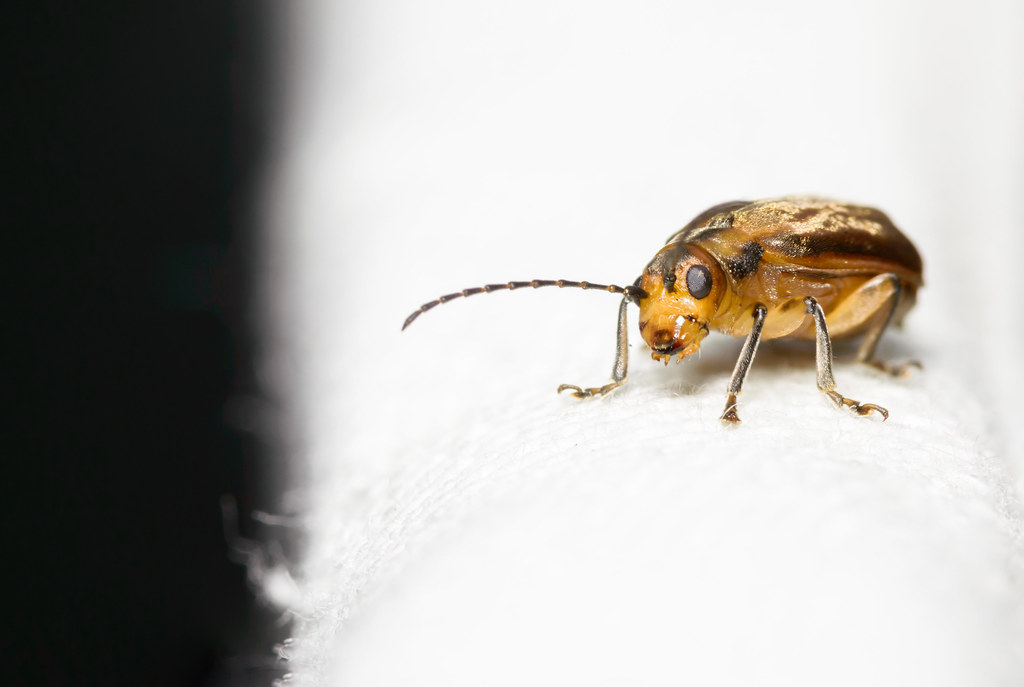Latest kit for close-up/macro.
The cameras

0975 20 The cameras by
gardenersassistant, on Flickr
Canon 70D APS-C dSLR with 55-250 STM, shown here on the left with a Canon 500D +2 diopter close-up lens. I use the 70D for natural light shots, mainly flowers, occasionally large insects like butterflies and damselflies, and very occasionally (none this year so far) long exposure still air tripod shots.
Panasonic FZ330 small sensor bridge camera shown on the right with Venus Optics KX800 twin flash, used mainly for flash (along with very similar FZ200), sometimes used for natural light shots of flowers and large insects.
The close-up lenses uses for flash work

0975 21 The close-up lenses and their concave diffusers by
gardenersassistant, on Flickr
Top image. Each close-up lens is shown with the concave diffuser used with it. These are, left to right, Raynox 150 (4.8 diopters), Raynox 250 (8 diopters), Raynox 150 and 250 stacked (12.8 diopters), front right Raynox MSN-202 (25 diopters), rear right Raynox MSN-505 (32 diopters).
Bottom image. The close-up lenses in their cases, each marked side and top with a different velcro pattern so I can find the one I want (by touch if necessary). The boxes have foam and other padding so the lenses don't rattle around. Each lens has a lens cap but is open at the other end.
Flash head diffusers

0975 22 Flash head diffuser by
gardenersassistant, on Flickr
Each diffuser has three layers, two of "plastic paper" and one of expanded polystyrene. They attach to the flash heads with velcro.
Raynox 150 and 250 setups on the FZ330

0975 23 Raynox 250 and 150 setups by
gardenersassistant, on Flickr
On the left, Raynox 250 setup. Raynox 150 setup on the right. The Raynox 150 is the least powerful of the lenses used with flash and needs the largest concave diffuser. To stop it waving around in the breeze it is supported by the KX800 focusing light using a strip of velcro. The slack in the support lets the concave diffuser move as the camera lens moves in and out.
The focusing light lets me use these setups at night, and can also help the autofocusing work in poor daytime light/in shade.
Concave diffuser and flexible arm arrangement

0975 24 Concave diffuser and flexible arm arrangements by
gardenersassistant, on Flickr
The close-up lenses and concave diffusers have velcro on them so the concave diffusers can be attached to the close-up lenses as shown on the left. One of the flash heads has been moved out of the way for this shot, and it is in the sort of position that can be used to illuminate dark backgrounds while the other head is used to illuminate the subject.
As shown on the right, the arms are crossed over as it turns out this is the best configuration to get the heads into a suitable position and adjust them without stressing the wiring that runs through the flexible arms.
The LCD hood

0975 25 LCD hood by
gardenersassistant, on Flickr
The hood fits the FZ200, FZ330 and 70D.
The batteries

0975 14 Batteries for cameras and flash - matchsticks show next flash batteries to use 1300h by
gardenersassistant, on Flickr
There are two matchsticks, one in the AAA batteries and one in the AA batteries. This tells me which set of batteries to use next so I can keep them rotated. When I change batteries while shooting I put the used batteries in upside down so I know which ones to charge later and move the matchstick to the next set of batteries.
The rest of the kit

0975 19 Kitbag plus kneepads, hat, wellies and steadying sticks 1300h by
gardenersassistant, on Flickr
You can see the close-up lenses in one slot in the bag and the batteries in the next slot. The diffusers are in another slot and various other bits and pieces are in the bag.
I carry the FZ330 and the second camera (70D or FZ200) travels in the bag. Hanging from a bulldog clip on the outside of the bag is a folded, sturdy rubble bag which I can put things down on if the ground is wet.
Other important parts of the kit - knee pads, wellies, hat and the steadying sticks which I am starting to use more. The plunger is used to spread the load and avoid damaging flower beds, but it turns out to be unnecessary a lot of the time.













 IMG_3053
IMG_3053 DSC08102
DSC08102





 Travel Kit
Travel Kit Travel Kit - Accessories
Travel Kit - Accessories !!!!
!!!!







































